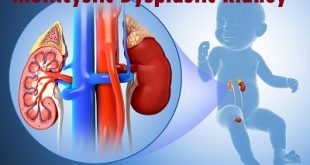Definition
Mastitis is an infection and inflammation of the breast, usually the fatty tissue of the breast, that causes redness, pain and swelling. As this swelling pushes on the milk ducts, it causes pain. Mastitis is usually caused by an infection with the bacteria Staphylococcus aureus. These bacteria are normally present on your skin, but cause problems when they enter the body. Bacteria causing mastitis enter through a break or crack in the skin of the breast, usually on the nipple. In fact, mastitis usually occurs in women who are breastfeeding because the nipples often become dry and irritated and can become cracked during nursing. This allows the bacteria to invade breast tissue, in particular the milk ducts and milk glands.
Mastitis in a nonbreast feeding woman is more common after menopause than before. In very rare cases, this may indicate the presence of another primary disease, such as breast cancer. At the same time, a clogged milk duct can mimic mastitis. While a woman adjusts to breastfeeding a new infant, the milk ducts inside the breast can become clogged, causing tenderness, redness, lumps and even heat under the skin surface, but without infection.
It is possible in many cases to determine yourself if you have a clogged milk duct as opposed to mastitis. You can usually relieve a clogged milk duct by massaging the area. If these symptoms persist, however, or if you develop fever and muscle pains or body aches, it is more likely that you have indeed developed mastitis. Fortunately, mastitis can be easily treated.
While mastitis is almost never an emergency, left untreated it can lead to a breast abscess, which is a collection of pus in a hollow area in the breast. Your doctor may need to drain the abscess. A wiser course is to never let mastitis lead to an abscess.
Types of Mastitis
The different types of mastitis include:
Lactation: This infection type affects breastfeeding women. Also called puerperal mastitis, it’s the most common.
Periductal: Menopausal and postmenopausal women and smokers are more prone to periductal mastitis. Also called mammary duct ectasia, this condition occurs when milk ducts thicken. The nipple on the affected breast may turn inward (inverted nipple) and produce a milky discharge.
Mastitis Risk factors
Risk factors for mastitis include:
- Previous bout of mastitis while breast-feeding
- Sore or cracked nipples although mastitis can develop without broken skin
- Wearing a tightfitting bra or putting pressure on your breast when using a seat belt or carrying a heavy bag, which may restrict milk flow
- Improper nursing technique
- Becoming overly tired or stressed
- Poor nutrition
- Smoking
Causes of Mastitis
These are some of the risk factors that might increase your chance of developing the mastitis infection:
- Incorrect breastfeeding technique: If you don’t vary your breastfeeding positions or don’t fully empty each breast, for example, the milk can build up and can become trapped in the milk ducts.
- Clogged milk ducts that aren’t cleared in time: If a milk duct gets clogged with milk, a hard and tender lump will form. If the clogged duct isn’t cleared, an infection can set in.
- A crack or blister on the nipple: A crack in the skin of the nipple or a milk blister can lead to a bacterial infection in the breast. A milk blister is a painful white spot on or near the nipple. It isn’t the same as a blister caused by friction from an incorrect latch from your baby while feeding; it’s a spot of thickened milk near the opening of the nipple that may block the flow of milk.
- Constraining your breasts: Wearing a bra that is too tight or putting pressure on your breast (for example, from the strap of a heavy bag) can restrict the flow of milk.
- A weakened immune system: Being overly stressed or fatigued, or having poor nutrition can suppress your immune system and make you more susceptible to the mastitis infection.
- Previous bouts of mastitis.
Symptoms
Women who have mastitis may feel ill. They may feel run down or achy. In addition to an inflamed breast, they may feel like they have the flu. Other symptoms may include:
- Breast pain
- Swelling
- A tender, red, wedge-shaped area on the breast
- A breast that is warm or hot to the touch
- A burning sensation while breastfeeding
- Discharge from the nipple
- Fever
- Chills
- Nausea or vomiting
Mastitis usually affects only one breast at a time.
Mastitis complications
If your symptoms do not get better within 24 to 48 hours, it’s important to contact your doctor. A delay in treatment can lead to complications such as early weaning, breast abscess, or thrush.
Early Weaning
The development of mastitis may cause some women to consider weaning. Nursing with mastitis is safe, and it helps to clear the infection, so it’s not necessary to stop breastfeeding. In fact, the sudden end of breastfeeding can make mastitis worse, and it’s more likely to lead to an abscess.8
Breast Abscess
An abscess is a tender, fluid-filled lump that can form in your breast as a result of mastitis. If you develop an abscess, your doctor may need to remove the fluid with a needle, or you may have to have minor surgery.
Thrush
Thrush is a fungal or yeast infection. Yeast is naturally present on and in our bodies, but when it overgrows or moves to a place it shouldn’t be, it can become a problem. Thrush can cause a breast infection by getting into the breast through damaged nipples, but it can also develop as a result of mastitis.
The use of antibiotics to treat mastitis can lead to an overgrowth of yeast. When this happens, you can develop a yeast infection that causes red, burning nipples and breast pain. You also may see white patches or redness in your baby’s mouth.
If you see thrush on your nipples or in your child’s mouth, call the doctor. Both you and your child will need treatment with an anti-fungal medication. And, because yeast spreads quickly and is difficult to get rid of, it’s possible that other family members may need to be treated as well.
Diagnosis and test
If you think you have mastitis, notify your doctor as soon as possible. Your doctor will examine your breasts and come up with a treatment plan.
Most of the time, mastitis is diagnosed with an examination and additional tests are not needed. However, if the mastitis doesn’t clear up or continues to get worse, your doctor may order the following tests.
- Breastmilk culture: If your infection is severe, occurred in the hospital, or isn’t responding to antibiotics, your doctor may order a culture.
- Ultrasound: Sometimes doctors will order an ultrasound if your condition doesn’t improve within 48 to 72 hours.
- Blood cultures: If your breast redness continues to worsen and your vital signs become unstable, the doctor may order a blood culture.
Treatment and medications
The process of treating lactation mastitis often includes:
- Antibiotics: A prescription of 10 to 15day course of antibiotic is recommended for the treatment of lactation mastitis. It can take a short span of only 24 hour of antibiotic usage for you to feel well once again. In order to minimize the risk of lactation mastitis recurring, it is advisable to finish all the prescribed bills.
- Pain relievers: A mild reliever of pain can be recommended by a doctor. Ibuprofen (Motrin IB, Advil and others) and acetaminophen (Tylenol and others) are examples of the mild pain killers.
- You should adjust with you nursing technique: Ensure that your child is able to feed in the right manner and also you must confirm that the milk in your breast is fully emptied. If you need any support your doctor can refer you to a lactating consultant. The physician can also consider to reviews the technique that you apply when breast-feeding.
- You should promote your body to fight the infection by drinking a lot of fluids. This process is known as self-care. You ensure that you continue breast feeding and get enough rest.
It is very important to go back to the doctor if the lactation mastitis has not cleared.
How to treat mastitis naturally
Rest is one of the best things you can do while your body is fighting an infection is to rest. So snuggle up in bed with your little one and recruit help if needed.
Nurse: Though breast is tender and nursing may be painful, but it’s important to empty out the infected breast thoroughly. Nurse and pump as often as possible. But of course, continue nursing on the other side too.
Massage: It might be painful, but try to massage the breast toward the nipple while nursing and in between feedings. This will help loosen the milk duct.
Apply heat: Warmth increases circulation and helps the milk to flow. Apply a warm compress on the infected area for 15 minutes, three times a day, followed by a massage. Or, massage the infected breast in a warm shower.
Drink water: Staying hydrated is important for maintaining your milk supply.
Prevention of Mastitis
To help prevent mastitis:
- Mothers and midwives should thoroughly wash their hands before touching the breasts after a nappy change.
- Make sure the baby is positioned and attached properly on the breast to assist in thorough breastmilk drainage.
- Avoid long periods between feeds. Feed frequently. Avoid skipping feeds, if replacing a breastfeed with a bottle, express to avoid blocked milk ducts or a reduction in your breastmilk supply.
- Wear loose, comfortable clothing. Bras, if worn, should be properly fitted.
- Avoid nipple creams, ointments and prolonged use of nipple pads.
- If the mother has been unwell, see a GP to rule out anaemia.
 Diseases Treatments Dictionary This is complete solution to read all diseases treatments Which covers Prevention, Causes, Symptoms, Medical Terms, Drugs, Prescription, Natural Remedies with cures and Treatments. Most of the common diseases were listed in names, split with categories.
Diseases Treatments Dictionary This is complete solution to read all diseases treatments Which covers Prevention, Causes, Symptoms, Medical Terms, Drugs, Prescription, Natural Remedies with cures and Treatments. Most of the common diseases were listed in names, split with categories.







